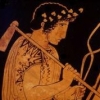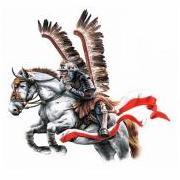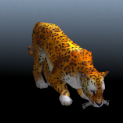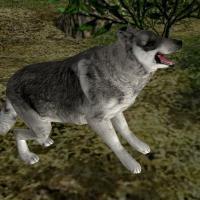-
Posts
3.401 -
Joined
-
Last visited
-
Days Won
1
Aeros's Achievements

Primus Pilus (7/14)
40
Reputation
-
Quixel is one of the cooler VFX asset libraries I've seen lately, available for Unity and Unreal Engine and more. Its having a greater role It has a large amount of assets available for free as well. I don't know whether its license allows it to be used in 0AD however this is an incredible resource I'm sharing for inspiration and technical direction for any artists here. https://quixel.com/megascans/library/latest Youtube also has tons of videos of how these are used in Unreal Engine and Unity for level design.
-

How to create lowpoly trees with Blender 3D
Aeros replied to Enrique's topic in Tutorials, references and art help
Sorry friend! Thank you for correcting me in honest, credit to Bigtiger and stanislas69 and my questions directed to them -
Bigtiger, The coniferous forest biome you are working on looks really good, great attention to detail, and well done over all. My feedback is that there is a slight flat look to the texture, abit like warcraft style. One way I can think of to lessen a flat look is to imagine the sun and how it works on the asset. How does the light hit it, where does the shadow fall. How much of either of those are needed to give depth to a texture. Can I ask you to make a map in Atlas with your art assets to show them off? Can you make the gameplay fun and interesting to the player? If so, will you share the results with us for feedback? I really want to see you make a world with the art you're making and let us players loose on it : ) I know when making art you want to see it tie in to what is already there, making a map with it is a good exercise to see how it fits in.
-

How to create lowpoly trees with Blender 3D
Aeros replied to Enrique's topic in Tutorials, references and art help
asterix, Thank you for sharing that link and making me aware of your project. That looks great to me, that is seriously lush! Great work, and respect from my end. Your art work is good enough to be in the core game, have you contacted the team? Its not a mysterious prospect, just have a vision and a desire to see it through and say you are there for it. I want to speak candidly with advice, it is one thing to make artwork and assets, it is another thing to make an experience within a game. Your work is amazing and your dedication shows it. All I ask, is can you make an experience for players to go through? Even if it is 1 hour long, even if it a map in atlas that we can play in skirmish mode... can you make a story? The flora assets you've made are beautiful and well done. Can you tell a story with them? Use them! -

How to create lowpoly trees with Blender 3D
Aeros replied to Enrique's topic in Tutorials, references and art help
This is awesome I always intended to go back and do something like this, those first dead trees were quite crap and were just the same tree mesh but without the leaves geometry. I only comitted them because they were an extra art asset for almost no work. When I was working on this at the time we didn't have an art biome that those dead trees to fit in so it was back burnered to improve them. The result of your branch texture is really good, the only way to get it better is to give the trunks more geometry and curves IMO -

How to create lowpoly trees with Blender 3D
Aeros replied to Enrique's topic in Tutorials, references and art help
When I first designed some of the trees for the game, I was getting into the files of other games and looking at how they did them to learn from that and find motivation to try to do something better. Much of what low poly 3d work for games is how to make as good of an effect for as little resources as possible so that computationally the game can run in real time. Here is an old screenshot with the trees in question, they have probably been improved upon and modified since back then but are still in the game. https://en.wikipedia.org/wiki/Genie_Engine#/media/File:Magna-Graecia-Redux-1600x1200.jpg The exact texture is still in the game and shown in the tutorial above. As a modder I loved opening up a game's files and seeing how it all comes together. I had found motivation for the technique I used in 0ad actually from Battlefield 1942 which at the time looked quite good. Exploring their game files I saw that their tree textures were all a single branch, repeated and scaled along planes of geometry similarly shown in the tutorial posted above. Prior to this trees in 3d games were like a spray paint "blob" of canopy leaves placed on a pyramid or octagon geometry like in Age of Mythology and Age of Empires 3. Our first trees in the game were of a similar style. I went through a few iterations of the most generic "branch" i could make. I think the texture was 128x128 or something very small like that (today its common for game textures to be 4096x4096 pixels). I think we had a cap of 256x256 or 512x512for most textures in the game, so whatever I did would have to fit in that resolution, we were always trying to use as little pixels as possible, originally the game would have to run on a 64Mb graphics card as our minimum requirement. We'd actually lag out our computers if everything was 512x512. Early versions you could tell a some aspect of a the branch repeats so anytime something stuck out I'd go back and remove it and make it more and more "generic"...the goal was to not have a spot on the texture stand out so much so that you could tell is the same texture repeating. This is also the same philosophy for ground textures, when it happens its painful to look at, so a certain uniformity is desired. It was a study in making something symmetrical, but different enough so that it looks organic. Too organic or too symmetrical and you can see the "tiling" effect when the texture repeats. Also important to me was to be able to see the individual leaves rather than a blurry smudge of canopy. I had also burnt in some shadowing and specular effect drawn by hand within photoshop in the texture (the shine at the tips of the leaves to mimick the sun hitting them, and a darker shadow in the body to ofcourse mimick shade cast from other leaves), It gives the branch clusters a sort of depth and volume. This was to mimick dynamic effects that our engine didn't have at the time. The effect was really good for the amount of resources used. (a single 128x128 texture file, or was it 64x64?) Today you would have alpha maps and a specular channel doing this along with the shading from a game's engine to make the effect more dynamic, and use as much geometry as you want but back then in 2004 we didn't have that luxury. When designing I also found less is more, or atleast if the poly count of the branch planes is really dense then you have to compensate by removing leaves from the texture used or it gets blurry and muddy looking because too much is going on, even though higher resolutions and more geometry was used. Less is more. If you are designing trees today, you would want to break down the tree into its "element" branches, have a few versions of that, and build it up from there against a reference, then spin it around in your 3d software and do it again, adjusting as needed so it looks good from all angles. I see Enrique has a pretty good understanding of it and a good tutorial showcasing that style. -

Parallel GPU-based A* algorithm in pathfinding
Aeros replied to Kuba386's topic in Game Development & Technical Discussion
I'm interested if this find is of any resource to any programmers who might still be developing. Pathfinding and why we hit this lag one large maps with large amounts of units has perplexed staff since inception, and similarly perplexes programmers who have joined in their attempts to solve it. Despite computers being some 10-20 times faster than they were when the engine was first being developed, the pathfinding remains bottlenecked by some thread or function even today. Its clearly not an issue of a computer's performance. When the engine was first designed we were making it work on a pentium 2 and a 64mb geforce MX graphics card as minimum system requirement ! My guess is the interplay between the way commands are scheduled within the game and the net code that communicates it to the clients. But then again I'm not a programmer. I remember at one point we had interviewed some of Ensemble Studio's (Age of Empires devs) programmers for how they built their pathfinding system. But here we are, with the majority of the contributors on the project being in areas other than high level code and programming, the issue remains ripe for someone capable of tackling this. We have had extremely tallented coders on the project in the past, but their numbers were in the handfuls and they all end up with serious day jobs one way or another where there is no time to do similar work for free at the end of the day. This is not a bad thing and in my opinion is normal and rational, all who work on the game did so for the experience of it and to learn how to do this. The team at its inception was a modding group for age of kings, not a developer. I think all it takes is reviewing the game's source code from the ground up, which due to so many contributors over the years, is not the easiest process. Though I'm convinced its not an impossible issue for someone who wants the credit and the glory of solving this bug. The source code is publicly available. https://sourceforge.net/projects/zero-ad/ I doubt a multie-threaded application will solve the pathfinding since I don't believe the issue is with computational power, but rather communication within different parts of the game's engine with one area "waiting" for a response from another thread which is performing poorly and is not optimized well for its simple task. A modern CPU today can for sure handle pathfinding for 500 units at 60 frames per second in real time...it did back in 1997.... The topic however is very interesting and worth studying, the future of gaming and Direct X 12 will be multi threaded and parallel processed. Someone with tallent will come along and work magic here. Its an excellent credit to get your foot in the game industry. There were a handful of people from the beginning that used their experience with 0ad to get an entry into the game industry or a related job, myself included. -
This is like a ruler to help us measure the size of objects, use as reference to see the game's "tiles" that is built of, and to make sure the 3d models are correctly lining up with their intended size and footprint within the game. I.e. a unit takes up 1x1 tiles, a house 3x3 a town center 8x8 or whatever it happens to be per the design documents. In 3d software (at the time 3dstudio max) we'd have a similar ruler setup in our modeling environment so that we are exporting the models at the correct size for the game and making sure the scale is consistent between art assets.
-
[edit] Sorry, carry on. I thought you two were bots.
-

What Is Still Missing In Art Development ?
Aeros replied to Bitiquinho's topic in General Discussion
Welcome to the forums! There are some very talented artists who can turn out art relatively quickly, faster than the programmers can keep up with. Before the gameplay can be fine tuned, all the gears that it calls for need to be in working order, the rest is just stats. The majority of the process building this game is coding it to do everything the design asks for. Thats a lot. As the alpha grows, you'll start to see more of the civs. If you are learning to model, take a shot at making something Show it on the forums, nothing is stopping you and documentation exists on how to do all of this -
There is no reason Pureon's work shouldn't be the game. In the scenario design community we call this eye candy and use it to embellish the game world where-ever we can. I remember there is some design layed out for world ambient objects exactly for the purpose. We anticipate attempting to recreate the look of dense cities...Along these lines.... What would be very helpful is creating generic buildings out of the current art already used for the civs. They don't have to be much for starters, just a few simple shapes. This and any of the eye candy Puereon is making can go to designing cities for the campaign or even random maps (if the sky were the limit) These might not have a gameplay use (yet) but they can be included as objects in atlas. Or in PR videos and screenshots. Ofcourse its useable. We had a list going back in the day which is a goldmine of ideas to start with. Its beautiful work
-
Just dropping in to say that you're doing GREAT things, Pureon Keep up the awesome, very happy seeing this
-
Hmmmmmmmm I notice the main thing keeping these maps empty is a lack of easy to set up foliage and ground cover. half the biome art still isn't there
-
That is really fresh Pureon! Really happy to see this. Having done hundreds of these in the past, a word of advice will be to catch a more dramatic angle of the shot, with the view brought down abit and tilted skywards (we call this POV, point of view). This will make the buildings look more proportional. Really like how you've got a city going on
-
I seem to think that just a faster training time is enough too. If there was a resource discount, NO ONE would train in any other way other than batch training, since if they didn't they would lose to the person who did. I'm okay with saying 20% discount too, its not a major detail. We really could just not worry about it right now and have the whole squad pop into existance right outside the barracks. If this is tremendously easier thats what we should do and worry about polishing it later. I'm not sure our buildings are even scale enough to pull off units emerging from within them. Maybe one by one, but batch training would totally break that. I know some games where units are very small, they can emerge as a formation out of the door. All the units clip through eachother at the door but then spread out once on the ground, it looks convincing enough from the default game view. Another way of doing it is having the units generate at the back of the building away from view and then walk to the front or the rally point. I kind of like this idea. My preference is for the easiest to impliment option, these aren't killer features here that we can brag about










